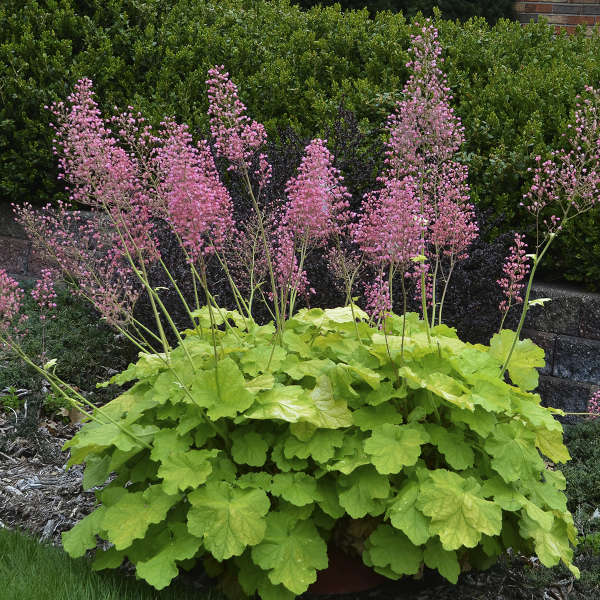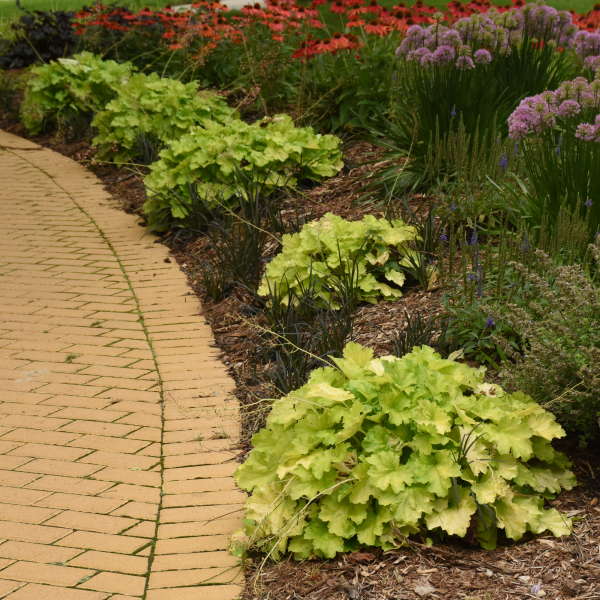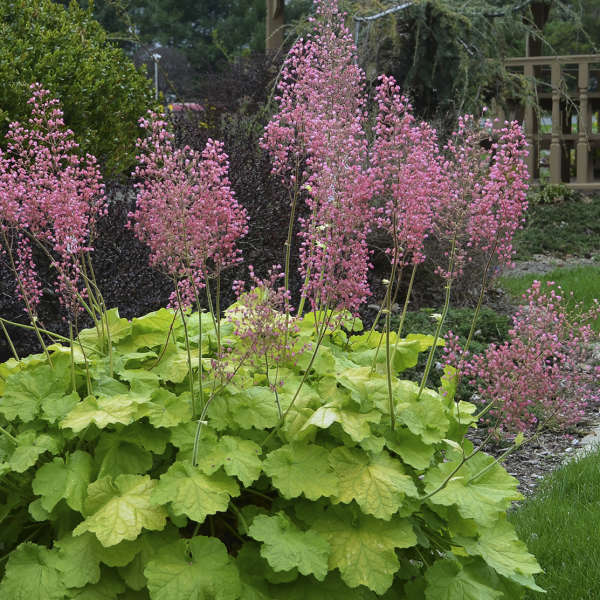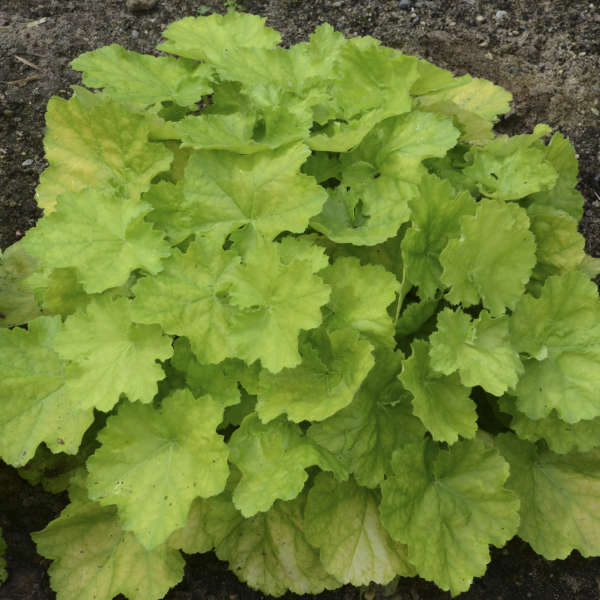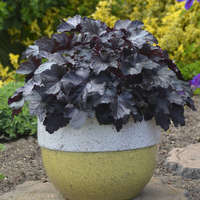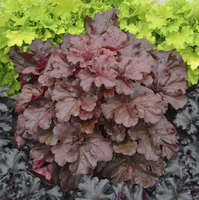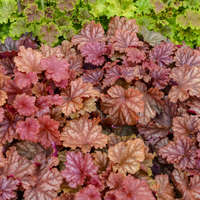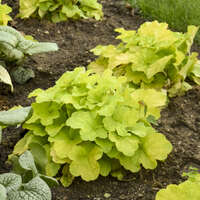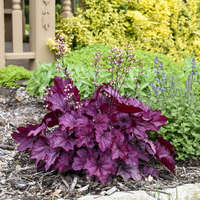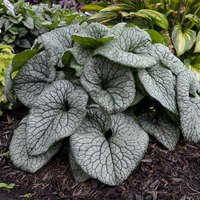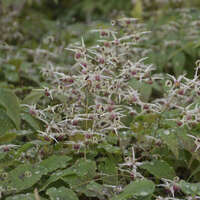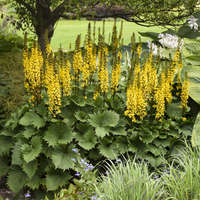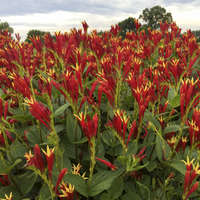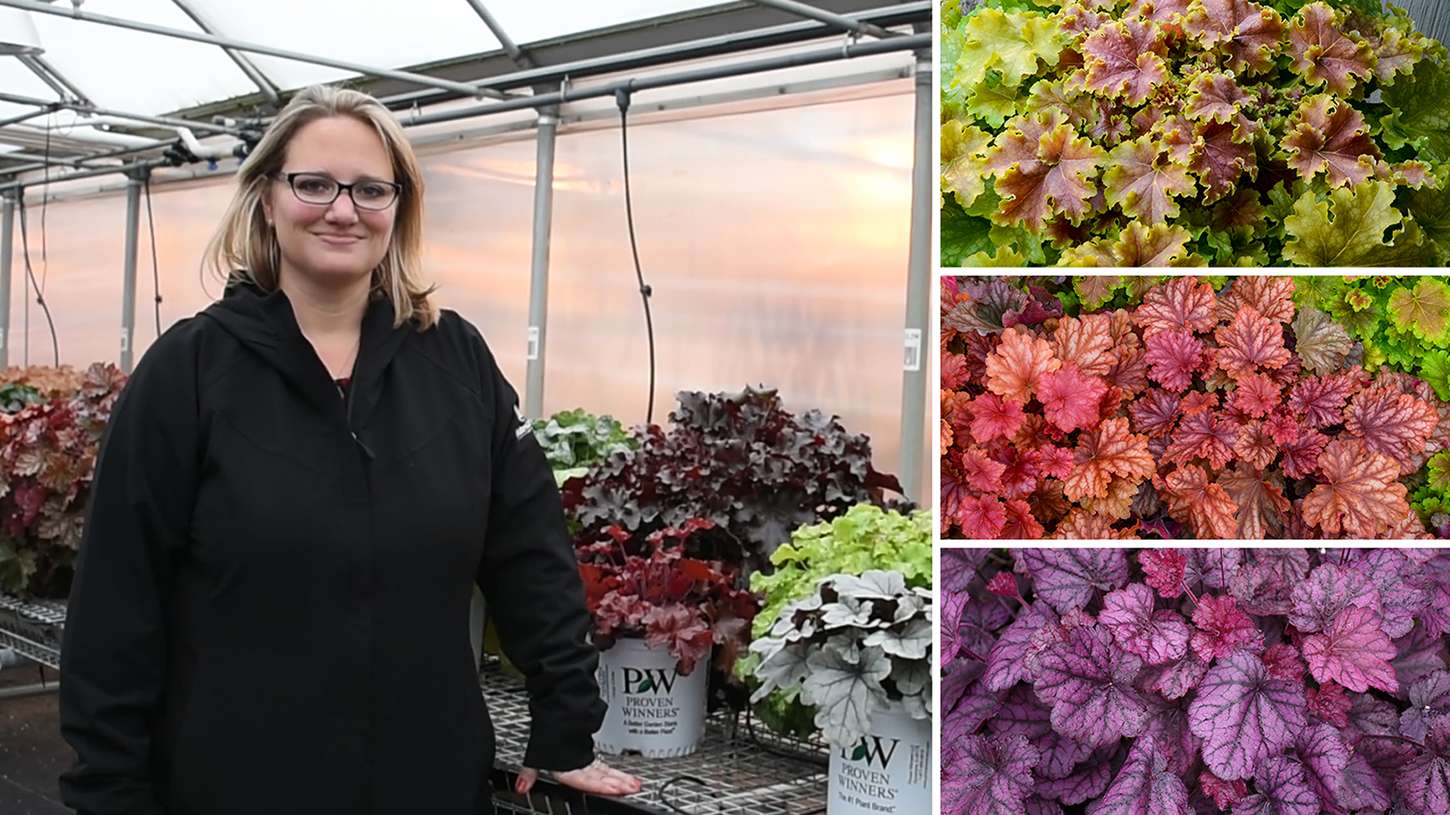Heuchera 'Pretty Pistachio' CPBRAF PP29361
PRIMO® Series

Common Name: Coral Bells
You’ll be impressed by this big and beautiful plant for both its flowering performance and its garden performance. Starting in spring, 4½" wide leaves are chartreuse and mellow to lime green in summer. Huge, 5” wide clusters of medium pink flowers are produced continuously starting in midsummer and going until early fall. Flowers dry on the stems to a lovely raspberry color, extending the attractiveness of the plant. This plant preforms best in filtered sun, as too much sun will bleach the brightly colored leaves.
PRIMO® Heuchera differ from the DOLCE® Series with larger, faster growing habits and a more substanial landscape presence.
Coral bells are easy to grow and blend easily with most other perennials in the landscape. Because of their low, mounding habit, they are often used as edging along paths or in containers. Try cutting a few of the tall flower scapes for fresh bouquets.
The PRIMO® trademark is owned by Walters Gardens, Inc.
